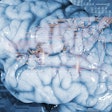Monday, November 26 | 11:50 a.m.-12:00 p.m. | SSC09-09 | Room E450A
In this talk, researchers will present a portable x-ray system and machine-learning image analysis application designed to make it easier to diagnose tuberculosis in developing and underdeveloped nations.Tuberculosis was among the top 10 causes of death in 2015; 1.8 million died of the disease in 2015, according to the World Health Organization (WHO). The chest x-ray is the primary tool for detecting tuberculosis, but access and availability can be sparse in developing and underdeveloped nations. Furthermore, interpretation expertise can be costly and may not be available, according to presenter Girish Srinivasan, PhD, of imaging software developer PhenoMx. There's also the challenge of inter- and intrareader availability.
To help, the group designed a portable automated x-ray system with a portable x-ray source that could potentially be powered via solar energy, an amorphous silicon thin-film transistor wireless flat-panel digital radiography (DR) detector, and a machine learning-based automatic x-ray image reader application.
"The WHO is now becoming an advocate for [chest x-ray] in tackling tuberculosis, and this solution can accelerate the push and adoption," Srinivasan told AuntMinnie.com. "Due to minimal infrastructure requirements and portability of the hardware, pop-up testing centers can be set up anywhere."
What's more, the automation can reduce dependency on experts for analysis; the consistency in interpretation provided by the machine-learning application will lead to standardization, Srinivasan said. It can also be provided at a lower cost than human interpretation.
The end goals of the project are effective early detection and a dependable diagnosis for tuberculosis, he said.
"Tuberculosis is a very treatable disease, and no individual should suffer from it," Srinivasan said.
Learn more by attending this presentation on Monday.




















